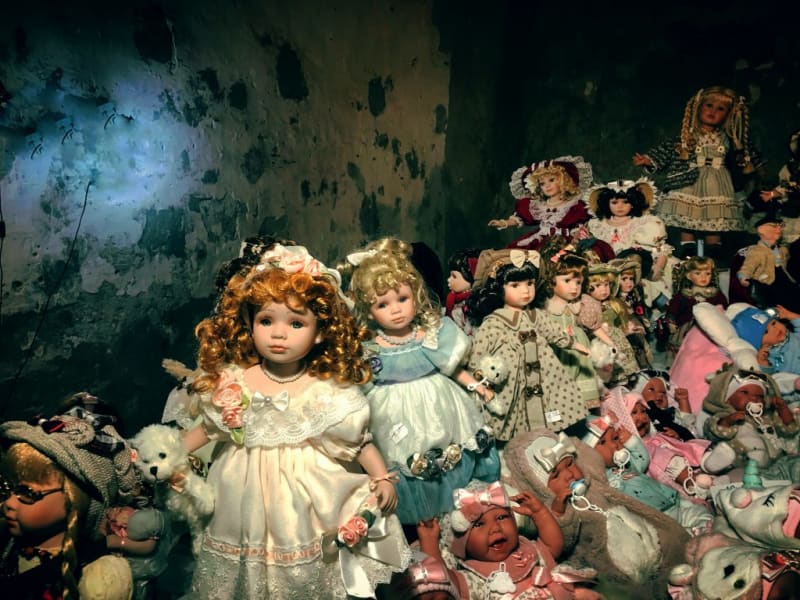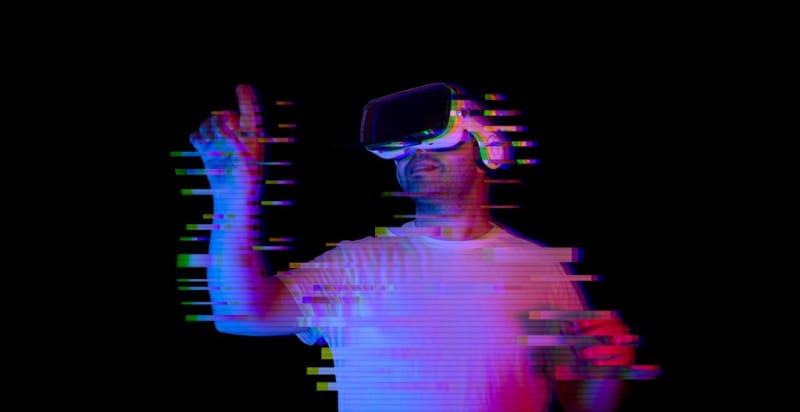Photocopying a Magic the Gathering Card does not mean you own the card.
You can right-click and save all images of the best MTG cards, take them to a printer, and have a deck made up for yourself.
They would look identical to the real thing.
No one would know the difference except for the most discerning eyes.
But you still wouldn't have the cards.
They would still be fakes.
When NFTs first started becoming popular, I thought the idea was stupid.
I was one of those "right clickers."
Actually, I didn't save anyone's NFTs that I recall.
I didn't even want copies because I wanted nothing to do with it all.
But then some things changed my mind.
That's what this post is about.

It's hella fun.
All the NFTs I've bought were not with my money.
Sort of.
I bought a bunch of cryptocurrencies several years ago.
The best of them was Ethereum ($ETH).
Since then, my $ETH has tripled.
I turned those gains into Tezos ($XTZ), keeping the original amount invested in $ETH.
Then I spend only from those gains.
And dang, is it fun.
It's hard to restrain myself sometimes.
The purchases I made in the first week were all a part of the learning experience that has led to this blog post.
There are two ways to get the NFTs:
- Buy it straight out.
- Mint a new one.
When you buy one, you know what you're getting.
When you mint one, it's probably going to be randomization from a series.
It's exciting when you hit the mint button, and it generates a totally unique NFT for you.
My first buy and first mint were both CyberKidz Club, which also has a fantastic community.
The communities are very welcoming.
You'll be hard-pressed to find any NFT communities not being welcoming.
The communities are generally built out of people who own an NFT from that project.
As mentioned earlier, my first was CyberKidz Club.
The folks in that community taught me most of what I know about NFTs (that I didn't discover the hard way).
I'll talk about creating my first NFTs later.
The quick story is that I tried to make mine on the $ETH blockchain.
I discovered the gas prices were too damn high.
A friend in the CYBR Magazine Discord recommended I check out Objkt.com.
Objkt is on $XTZ, and it's significantly cheaper.
So, that's where I put my first NFTs.
While browsing around, a CyberKidz Club caught my eye.
I checked out the website and was more intrigued.
There was a link to their Discord, so I joined.
I didn't even own one yet, and they were immediately kind to me.
Because of that first impression, I immediately bought that Kid NFT that caught my eye.
They taught me a lot and led me to mint one, too.
Later on, I won the third Kid.
I check in at least once a day to say hi to everyone.

You get hit with a lot of spam and scams.
As soon as you start to post about NFTs on social media and join Discord servers, you will get hit with a lot of spam.
And a lot of scams (more on that later).
It doesn't seem to happen much on Twitter for some reason.
On Instagram, I get several messages per day from scams.
The same has happened with Discord.
On Instagram, whenever I post something, I get comments that tell me to share it with some other Instagram account that is based on NFTs.
It seems to work on growing those accounts, so that's why they keep doing it, but I find it annoying.
As much as I care about growing in the Web3 space myself, I don't want to be one of them.
I also noticed a Twitter growth technique that I mentioned in Issue 002 of Metaversian News.
The Twitter algorithm will boost posts that get a lot of interaction.
Twitter will even show them to people who may not follow that particular account but follow the subject.
People have figured out a way to game that and grow followers.
They post that they are going to buy NFTs and ask people to share theirs in replies.
This gives the post a lot of interaction which boosts it in the algorithm and shows it to people who are not already following them.
And then a percentage of those people follow them.
The next time they post it, it gets more interaction, and the cycle repeats.
I don't know if they're even actually buying the NFTs or using it as a trick to get more followers.
It's not something I would do, but if you do use that tactic to grow your following, I recommend actually buying some NFTs so that you're at least honest.
It's easy to fall for a scam.
I'll admit: I fell for a scam.
It was one of those situations where all the signs were there screaming "scam!"
But I wanted that NFT so bad.
The site said they were selling out fast.
And it was an NFT I could afford!
My own piece of digital land in the metaverse!
I could get started at my own place in a costly spot where only the wealthy play.
And all for just one easy payment of $100.
I knew I should double-check the domain name, but I didn't.
The Discord server for the project already had it listed as a scam.
I didn't check there either.
It's easy to get really excited and fall for a scam.
Don't be like me.
You can get free NFTs that are not scams.
Often, you can join a Discord for an NFT project that you do not yet own.
Most operate this way and have a section for non-owners and a private section for owners.
Many of these will give away free NFTs in these Discords.
It's a great way to get into a project for free.
From there, you can see if you want to get more involved or not.
I recommend not immediately selling any free ones you get.
That's rude.
Don't be like that.
People who already have an audience do way better.
This is a rule of the internet that everyone should know by now.
If you already have an audience, you will do better.
These aren't newbies like me when you see NFTs selling for big bucks.
They're people who already have a big following.
Of course, you can build a following over time.
And then you will be able to make big sales.
Assuming the NFT bubble hasn't burst by then.
If NFTs are a bubble, there's probably nothing to worry about.
During the "Dot Com Bubble," a lot of money was made in buying and selling websites and domains.
Then it "crashed."
Yet there are more websites than ever.
And they're still making money.
I encourage you to look at NFTs, the metaverse, and Web3 in general as the new normal.
Likely, many NFTs do not make it to stardom.
Most won't.
Some NFTs you buy will lose value.
The approach I'm taking is this:
I buy the NFTs I want, not to invest with intentions of selling later for a big payoff.
The ones I buy that are just art are just art.
They will decorate my metaversian home(s).
It's the same reason I buy a poster or painting to hang on my wall at home in meatspace.
Some NFTs have a purpose (more on that later).
There are NFTs now that are games that generate more cryptocurrency for you.
Clubs are popping up where you have to have an NFT to be a part of it.
They're very welcoming clubs, too!
If you're buying NFTs, buy them to be involved in the project.
This is the long term.
It can be hella expensive.
Since it feels like a bubble right now, a lot of the metaverse is costly.
Part of this is because the blockchains take time and literal energy to process transactions.
A transaction could be someone buying, selling, trading, even minting a new NFT.
All of that costs time and energy.
And it creates a queue of transactions waiting in line.
The energy is "paid for" with something called gas.
In many situations, the more gas is spent, the higher up you move in the line.
This creates substantial gas fees and long transaction times.
That's what happened with me when trying to make my NFTs on the $ETH blockchain.
My goal is to create "Five Dollar NFTs," but it wasn't possible with gas prices on $ETH as high as they were.
It would cost me more than five dollars just to make each one.
I had to find a better way.
It doesn't have to be hella expensive.
Ridiculous (IMHO) prices led me to $XTZ, which is significantly less expensive than most other blockchains.
It's also "clean NFT," which is part of why it's less expensive.
Or instead is a result of it being less expensive.
I don't really understand the technical stuff, but it requires significantly less time and energy for transactions.
Which in turn makes it much cheaper.
And because it uses significantly less energy, it's better for the environment.
At least compared to the other mainstream NFT blockchains.
Now, we just need to wait for stuff like Decentraland and The Sandbox to be built on the $XTZ chain.
Or build it ourselves.

These are the types of NFTs I look for:
After all that I learned in this first week, I've figured out what I like to look for in NFTs before buying them.
First, the NFTs I have bought:
- Artwork to decorate my metaversian living space(s) (once I have one).
- CyberKidz Club because I liked the lore and the Club was very welcoming to me as a newbie.
Next, I'm looking to buy:
- NFTs that have PlayToEarn (P2E) qualities.
- Metaversian real estate that I can develop into a place to hang out virtually.
Some metaversian real estate also doubles as P2E.
Those don't really look like they can be experienced from a virtual reality standpoint in the way Decentraland is.
This means to me, they are not virtual real estate.
They're just tokens in a game.
Which is cool, too.
I'm down to play some games.
But what I'm really excited about is having a virtual place I can call my own.
Until then, I explore and write blogs like this.





















